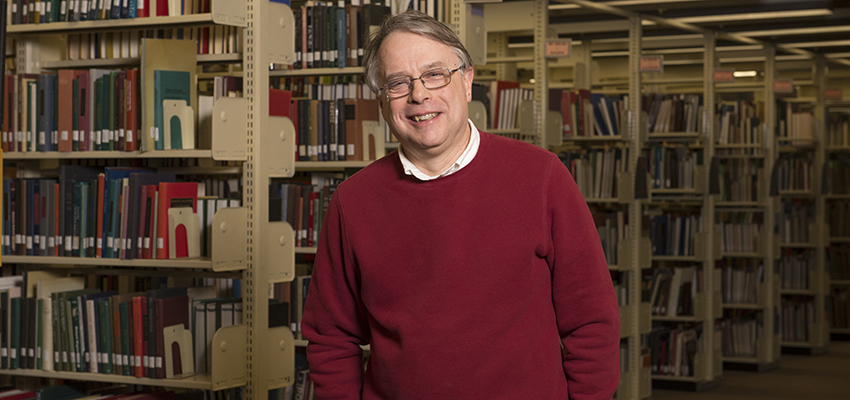If you heard it through this Grapevine, you can count on it.
Grapevine is the name of the annual survey that gives a first look at what states have budgeted for higher education in the next fiscal year. And it’s a must-read in higher education circles.
Editor Jim Palmer, who pulls the information together along with colleagues at the State Higher Education Executive Officers (SHEEO) group, isn’t surprised when a Wall Street Journal or New York Times reporter is on the line, asking about the data.
“There is a great political interest in it,” the professor said from his windowed office on the third floor of DeGarmo Hall. “Each year we’re able to provide a first look at funding for the coming year. But those figures often change as states balance their budgets.”
This year’s report is optimistic, with state support increasing by 5.7 percent nationwide over last year. That’s a change from a decrease in support in recent years. Two years ago, Grapevine showed a 7.5 percent decline, and last year there was a 0.4 percent decline.
But Palmer cautioned this year’s survey needs a closer look. Although 40 states reported increases of up to 27.3 percent, 10 states decreased funding. And just over half of the national increase was accounted for by increases in three large states: Illinois, California and Florida. Illinois reported a 14.5 percent increase, but that’s largely due to increasing appropriations made to the State Universities Retirement System to address underfunded pension programs.
Palmer, a professor in the College of Education’s Department of Educational Administration and Foundations, also pointed out that most states still haven’t restored funding lost during the 2007-2009 recession. Total state support in Fiscal Year 14 is 4.1 percent lower than five years ago.
“It’s going to take a while to recover to pre-recession levels,” he said. “We may be going up but the climb out of the trough this time will be a lot longer.”
Grapevine’s long history
Grapevine started in 1959 as a higher education newsletter at the University of Michigan, edited by Merritt Madison “M.M.” Chambers, who came to Illinois State in 1969 as a visiting professor and brought the newsletter with him, publishing it until his death at the age of 86 in 1985. Distinguished Professor Ed Hines took it over and in 2000, Palmer stepped in. It may be the longest continually operating survey in American higher education, he said.
As for the name, that was Chambers’ idea and it just stuck.
Since 2009, Grapevine has been a partnership, a joint project with the SHEEO group. That group was analyzing funding too, and it made sense to combine efforts.
Grapevine, which is published by the Center for the Study of Education Policy, started at an interesting time in higher education, when states were creating community colleges, normal universities were becoming state universities and baby boomers started going to college in droves.
“There was a great sense of social optimism,” Palmer said. “Public investment in colleges was associated with a healthy and culturally responsible society and there was an increase in support for them.”
The report was designed to track the growth of higher education. Recessions have sent state support tumbling, recovering as the economy restarts.
“As the economy improves, support increases but there’s a lag,” Palmer said, adding that the last recession was the most damaging since World War II. “Whether we continue to grow or whether we’re at a new normal remains to be seen.”
Palmer emphasizes he’s not an economist. He has a master’s in library science with a Ph.D. in education. Prior to joining Illinois State in 1992, he was acting director of the Center for Community College Education at George Mason University in Fairfax, Virginia, and was vice president of communications for the American Association of Community Colleges in Washington, D.C.
Kate Arthur can be reached at kaarthu@IllinoisState.edu.

